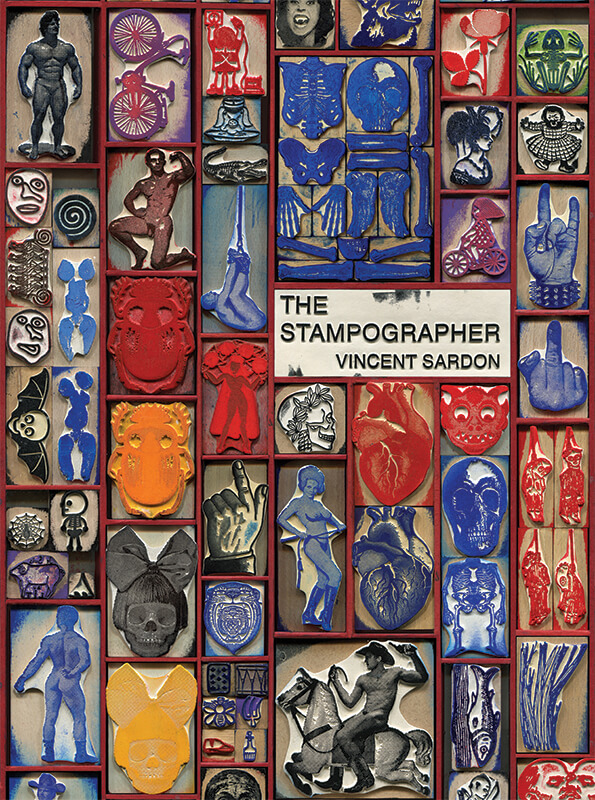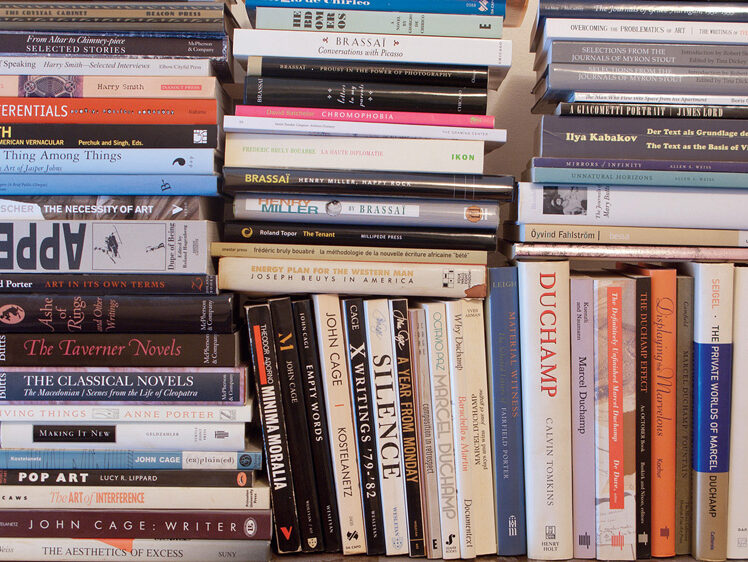Reviving The Dadaist Tradition Of Artful MischiefJuliana Halpert, Bookforum
reviews, 12/07/17
Vincent Sardon’s rubber-stamp artworks, on jolly display in The Stampographer, revive the Dadaist tradition of artful mischief. Prurient pin-up girls, extravagant swear words, and re-creations of well-known modernist works feature prominently in Sardon’s corruptions of the common bureaucratic tool. The stamps, all hand-made by Sardon in his Paris workshop, create impressions that are either text-based or pictorial. The latter produce Warholian repetitions of naked cowboys, doll heads, and skulls in intricate half-tone patterns, emulating the meshy quality of monochrome images in old magazines and newspapers.
Especially striking are his reproductions of Pop art masterworks: Sardon superimposes three stamps, each as red, blue, or yellow colorplate, to make miniature copies of Warhol’s portraits and Lichtenstein’s tearful women. Their precision is impressive; Marilyn Monroe’s face somehow appears finer—more photogenic even—than in Andy’s iconic silk screens. Sardon delights in holding the power to reproduce pulp-mag images and venerated artworks alike in his own hand.
His textual stamps also impersonate: Unless you look closely, any one of them is indistinguishable from an everyday office supply. But ceci n’est pas un stamp you’d find at your local library. Here, in authoritative block lettering, a stamp may validate sexual achievement (“European Alt-Sex Champion”; “Jedi waterbed master”) or offer slangy insults in many languages (Romanian: “May God break His Dick inside you”; French: “Curate my ass”). If the Dadaists aim was to both offend and enlighten, tearing down the fragile tower of fine-art sensibilities, Sardon has erected his own bawdy bureaucracy in its place and proudly serves as it notary public.
From “Artful Volumes: Bookforum Contributors on the Season’s Outstanding Art Books”. Originally published in the December 2017 / January 2018 issue of Bookforum.
see also
✼ natalie’s upstate weather report:
September 23, 2022 — Relentlessly stormy with brief bouts of sunshine as the melancholy of fall sets in. We’re all about the dummies here (and proofs), preparing to send off HC’s I Will Keep My Soul to press. Meanwhile, our publisher LP (who will not be bullied) is continuing testimony on zoom at a court in Lithuania (wish her luck!). And like a rocket with a countdown, we’ve launched this website! Thank you, TG & JG of ES!
[...]
